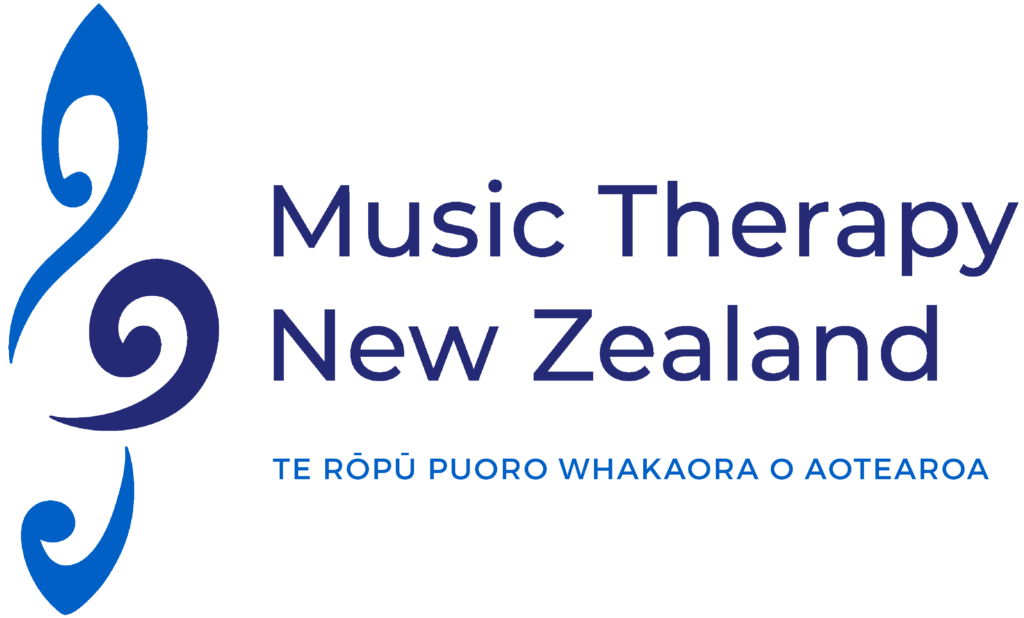Polen, D. W., Shultis, C. L., & Wheeler, B. L. (2017). Clinical Training Guide for the Student Music Therapist (2nd ed.). Dallas, TX: Barcelona Publishers.
Reviewer: Oliver E. L. Lowery
MMusTher (Hons), BMus, NZ RMTh
Raukatauri Music Therapy Centre, Auckland
When I was a music therapy student, I initially found myself overwhelmed by the technicality and level of detail in the majority of the literature I came across, and had difficulty situating the information within a coherent framework. When I came across the first edition of the Clinical Training Guide of the Student Music Therapist (2005), I felt like I had found something that not only explained the elements of music therapy in plain language, but that provided an overview of music therapy as a whole with a consistent viewpoint over all of its many components. It categorised the histories, the processes, and the elements in and around music therapy practice in the same way my brain categorises information, and provided a map from which I was able to delve further into each topic and fill in the detail. Because of this I truly credit it with so much of my early learning. So when the opportunity to review the second edition of one of my most recommended books came up, I put my hand up straight away.
The Clinical Training Guide for the Student Music Therapist organises a wealth of knowledge into several distinct areas. The first three chapters focus on exploring what music therapy is, how it works, and the pathway of a music therapist’s career. Chapters 4 to 7 outline the process of music therapy from planning, through assessment, goal-use, and strategies for implementation. The eighth to eleventh chapters cover the different experiences used to facilitate sessions such as improvisation, composition, and listening. And finally chapters 12 to 18 cover a broad range of topic that needed their own space to discuss, such as facilitation and working in different settings, through to documentation and self-assessment strategies for music therapists at all stages in their career.
The second edition of this book expands on the usability of the first edition firstly by bringing the literature into the present day. Reference material has been contextualised by including it in the body of the text, rather than placed as “further reading” at the end of each chapter. The authors achieve this without impacting the flow of the writing (which is important considering the intended reader) and this encourages the reader to seek further knowledge in relation to particular topics of interest. The demand for music therapists to support their claims with reputable evidence is an important, and the authors provide the reader with the tools to do so.
One significant addition to the second edition is an entirely new chapter on the essential aspects of becoming a music therapist. This chapter (Chapter 3 – “Essential Aspects of Becoming a Music Therapist: Education, Clinical Training, and Related Areas”) prepares the student for the personal and academic development they face as they work towards their chosen career path. The value of professional organisations and supervision is outlined clearly, though largely with reference to American practice. While acknowledging the fact that it would be impossible to provide this information on an international scale, the authors still provide plenty of information that is of relevance to students in New Zealand (NZ) and other countries as they discuss the importance of supervision, professionalism, ethics, and academic engagement. Assignments and references can also be easily adapted to suit the students’ countries by substituting the documents with those of their own country – e.g. replacing the AMTA Code of Ethics (American Music Therapy Association, 2015) with the NZ Code of Ethics (Music Therapy New Zealand and New Zealand Music Therapy Registration Board, 2012).
The assignments component of each chapter is a very useful guided approach to synthesising the information with the student’s own experiences, with suggestions for reflection and discussion. The authors have chosen to remove the three learning levels used in the first edition, and this provides for a gradually sequenced educational approach. This more flexible structure also makes the assignments more applicable for non-American student training programmes that have different pathways for learning. The assignments support the students’ practical music therapy placements and sit nicely as embellishments to a traditional training course, as opposed to being standalone activities.
It is clear that the the three authors provide a combined wealth of knowledge and experience that not only allows them to provide a detailed and wide overview of music therapy, but to do so in a way that is approachable and motivating for students coming into the world of music therapy. While this book is designed for students studying through American training programmes, the authors are aware of this, and the book still provides great value to music therapy students worldwide who follow a similar training pathway. I would strongly recommend the use of this book, not only for those already involved in their study, but for instructors, supervisors, and people interested in understanding music therapy as an intervention and as a career.
References – refer to the full journal
Download Full Journal


